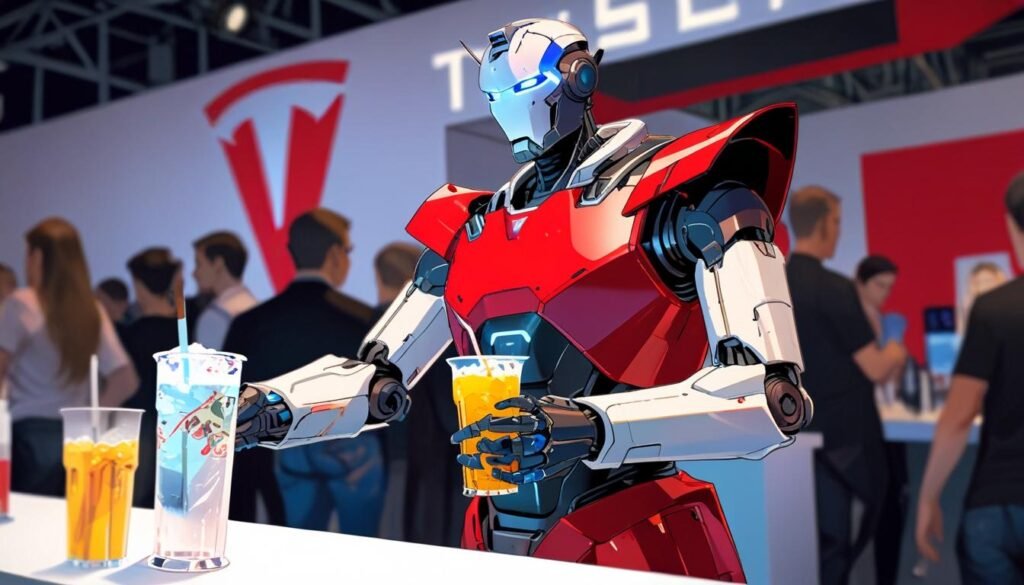Tesla’s recent event showcasing Optimus robots and the Cybercab robotaxi highlights the challenges of achieving true autonomy, amidst revelations of significant human intervention and rising scepticism among investors.
Tesla’s recent “We, Robot” event, which showcased its Optimus humanoid robots in conjunction with the unveiling of the Cybercab robotaxi, has sparked discussions about the extent of the robots’ autonomy. Held last week, the much-anticipated event was noted for its theatrics and bold announcements by Tesla CEO Elon Musk.
The Optimus robots were seen engaging with attendees by serving drinks, playing games, and dancing, creating a spectacle that initially seemed to demonstrate advanced autonomous capabilities. However, subsequent reports revealed that human intervention played a significant role in these performances. Attendees such as Robert Scoble shared that the robots were being “remote assisted” by human operators, a fact echoed by Morgan Stanley analyst Adam Jonas. He described the reliance on “tele-ops” or human intervention in a report, suggesting that the robots were far from achieving true autonomy.
Various signs indicated the involvement of human operators in the Optimus robots’ operations. Each robot exhibited unique vocal characteristics and provided swift, gesticulated responses to questions, which hinted at human mediation. Videos from the event showed robots humorously acknowledging their partial human control, further confirming the backstage support that facilitated their interactions.
Elon Musk is known for his extravagant and engaging showcases of Tesla’s technological advancements. The initial introduction of the humanoid robots involved a performer inside a robot suit, setting a dramatic tone that continued with the live display at the event. However, despite the impressive visuals, the event offered limited insight into the actual development progress of Tesla’s humanoid robotic technology.
The event coincided with the presentation of the Cybercab robotaxi, which did not capture investors’ confidence as expected. The Tesla stock experienced a noticeable decline following the event. Musk’s ambitious announcements regarding the Cybercab’s pricing and production timeline, including a proposed cost under $30,000 and production starting by 2026 or 2027, were met with skepticism. Musk’s history of optimistic projections, particularly concerning autonomous vehicle technology, has left some commentators and analysts doubtful. Previous claims, such as the promise of a million robotaxis by 2020 and the full self-driving capability by the end of 2022, remain unfulfilled.
While the “We, Robot” event was designed to captivate and intrigue, it also raised questions about the current capabilities versus the marketing narratives of Tesla’s cutting-edge technologies. The revealing of human assistance in the operation of the Optimus robots underscores the complexity and challenges faced in achieving true autonomy in robotics and autonomous vehicles.
Source: Noah Wire Services


